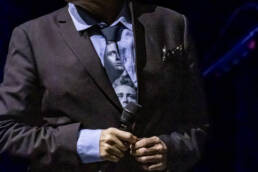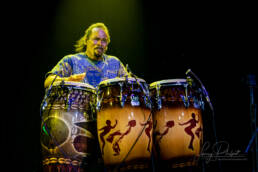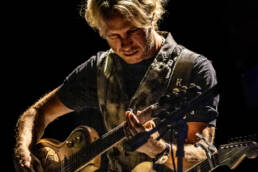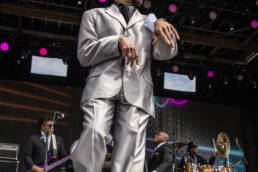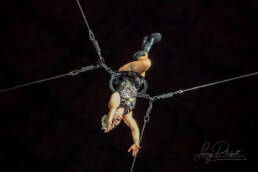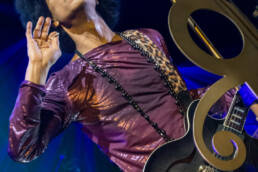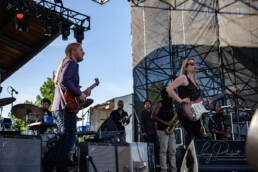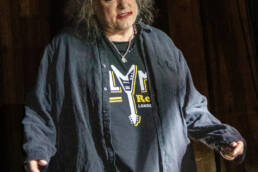Tom Petty: The Rebel Heart That Never Quit
This photo was taken in Milwaukee in 2013. Having just photographed Tom in Indianapolis just 10 days before, I was enjoying the Milwaukee show, and didn’t really need any photos because I had great shots from the Indianapolis show. Swaying back and forth in the photo pit to “So you want to be a rock and roll star”, Tom noticed I wasn’t shooting. He walked to the microphone, stopped singing, leaned on the mic and said to me with a smile, “You’re gonna get fired, man.”

Tom Petty: The Rebel Heart That Never Quit
The Sound That Called Him
Imagine a scrappy kid in Gainesville, Florida, circa 1961, sprawled out in front of a black-and-white TV. Eleven-year-old Tom Petty’s world tilts when Elvis Presley swagger-sings through Follow That Dream. It’s not just the voice—it’s the swagger, the defiance, the way music seems to bend reality. That moment plants a seed, but it’s the Beatles on The Ed Sullivan Show in ’64 that waters it. Tom trades his slingshot for a stack of 45s and starts dreaming in chords. Music isn’t a career choice yet—it’s an escape from a rough home, where his father’s temper looms large. By 17, he’s skipping school to jam in garages, convinced rock ‘n’ roll is his ticket out. For Tom, it’s not about fame; it’s about freedom.
The Boy from Gainesville: A Biography
Thomas Earl Petty was born October 20, 1950, in Gainesville, Florida, to Earl, a lumber salesman with a volatile streak, and Katherine, a gentle soul who balanced the chaos. Tom’s childhood was a tangle of Southern grit—swamps, heat, and a father who’d rather fight than hug. School didn’t stick; he was too restless, too drawn to the radio’s promises. At 14, he saw The Animals live and bought his first guitar, a cheap Sears model. By high school, he was fronting local bands like The Sundowners, his blonde mop and sharp cheekbones already hinting at the rock star to come.
Petty’s life wasn’t all riffs and dreams. He worked odd jobs—gravedigger, groundskeeper—while chasing gigs. His father’s abuse left scars, emotional and literal, and music became his shield. In his 20s, he married Jane Benyo, a Gainesville girl with a wild spirit, in 1974. They’d have two daughters, Adria and Annakim, but the marriage buckled under his rising fame and personal demons. A later marriage to Dana York in 2001 brought stability, though not without its own storms.
The Career That Shaped a Legacy
Tom Petty’s road to glory started with Mudcrutch, a scrappy Gainesville outfit he formed in 1970 with pals Mike Campbell (guitar) and Benmont Tench (keys). They cut a single, “Depot Street,” but fizzled out by ’75. Undeterred, Tom retooled the crew into Tom Petty and the Heartbreakers, adding Stan Lynch (drums) and Ron Blair (bass). Their 1976 self-titled debut was a slow burn—America yawned, but Britain bit hard, thanks to “Breakdown.” By 1979, Damn the Torpedoes exploded with “Refugee” and “Don’t Do Me Like That,” cementing them as rock royalty. Howie Epstein replaced Blair on bass in ’82, and Scott Thurston joined later as a multi-instrumentalist, rounding out the classic lineup.
The Heartbreakers weren’t Tom’s only playground. In 1988, he co-founded The Traveling Wilburys, a supergroup with George Harrison, Bob Dylan, Roy Orbison, and Jeff Lynne. Their loose, rootsy vibe birthed hits like “Handle with Care,” and Tom reveled in the camaraderie. Solo, he shone too—1989’s Full Moon Fever was a juggernaut, though Campbell and Tench still lent hands. Mudcrutch reunited in 2007 for a late-career lap, proving Tom never forgot his roots.
His ties to other artists? Stevie Nicks begged to join the Heartbreakers (Tom said no, but duets like “Stop Draggin’ My Heart Around” happened). Dylan’s gruff mentorship left marks, and Harrison’s quiet wisdom shaped the Wilburys. Onscreen, Tom popped up in The Postman (1997) as a grizzled mayor and voiced Lucky on King of the Hill—a nod to his drawling charm.
Awards? Two Grammys with the Heartbreakers, a solo Grammy for Wildflowers (1994), and a 2002 induction into the Rock and Roll Hall of Fame. The Wilburys nabbed a Grammy nod too. Petty’s trophy case reflects a career that never bowed.
The Hits That Echo Forever
- “American Girl” (1976) – Written by Petty, this jangly ode to restless dreamers became a cult classic, later immortalized in Silence of the Lambs.
- “Refugee” (1979) – Co-written with Mike Campbell, its raw defiance hit No. 15 on the Billboard Hot 100 and defined the Heartbreakers’ edge.
- “Free Fallin’” (1989) – Penned with Jeff Lynne, this solo gem soared to No. 7, painting L.A. with longing and grit.
- “I Won’t Back Down” (1989) – Another Lynne collab, it’s Petty’s anthem of resilience, peaking at No. 12 and ringing truer after his death.
Controversy on the Highway
Petty’s battles weren’t just in his songs. In 1979, he sued MCA Records when they tried to jack up Damn the Torpedoes’ price, filing for bankruptcy to dodge their grip—a punk move that won him fans. The ’80s brought darker clouds: heroin crept in, quietly wrecking him until a late-’90s rehab stint. His 1987 arson scare—when an ex-fan torched his Encino home—left him shaken but unbroken. And in 2017, his death at 66 from an accidental overdose of pain meds (after a grueling tour on a broken hip) sparked grief and debate about rock’s toll.
A Stage on Fire
Let’s rewind to July 4, 1986, at Rich Stadium in Buffalo. The Heartbreakers are touring with Bob Dylan, and 60,000 fans are buzzing. Midway through “Southern Accents,” a firecracker lands near Tom’s feet—some drunk’s idea of a prank. He doesn’t flinch. Instead, he stomps it out, mid-lyric, and sneers, “You’ll have to do better than that!” The crowd roars, and he rips into “Refugee” like a man possessed. Later, he’d laugh it off backstage, but that night, soaked in sweat and defiance, Tom Petty proved he was untouchable. It’s a story fans still whisper about—a rebel heart refusing to break.
